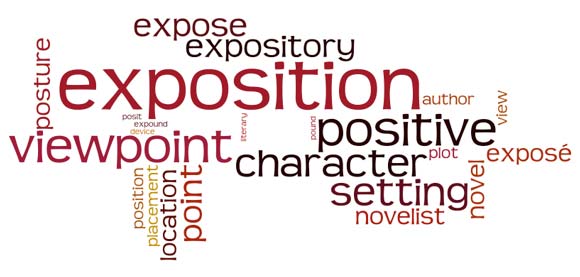
The purpose of argument is to convince through logic. For example, an experienced writer understands that an essay that compares and contrasts, or that describes a problem and presents a solution, each has its own conventional pattern of organization and that once readers recognize the intended mode, they also expect the writer to follow the organizational conventions associated with it. These are distinguished by purpose, as the names indicate, but also by structure or organization. This mode of writing has several subtypes, the most common being process analysis, definition, classification and division, comparison and contrast, cause and effect, and problem and solution. The prefix " Ex-" comes from Greek through Latin and means "out, or away from." The root of the word comes from the Latin verb ponere which means "to place." So translated literally, exposition means "to place out," and, of course, the thing that is placed out for us to see and understand is information. It may also try to evoke a mood or atmosphere, and this is aided by the use of simile and metaphor.Įxposition is the kind of writing that is used to inform. But description often tries to do more than to enable readers to visualize characters, settings, and actions. Nouns and adjectives can show what a person, place, or thing are like in their material aspects. A descriptive essay, or a descriptive passage in a story, tells how things look, sound, feel, taste, and smell. One well known example is "Gone With the Wind," the story of Scarlet O'Hara and Rhett Butler during the American Civil War.Īt its simplest, description tells what things are like according to the five senses.

For example, there is a genre called "historical fiction" that may more or less accurately portray an historical event while making up a story about real or fictional characters involved in that event. If the events actually happened, we give the writing another name such as biography, autobiography, history, after action report, or newspaper report.Īs with any dichotomy, there are some cases that fall in between.

However, we usually reserve the title "story" for fiction. " and end with "And they lived happily ever after." The events narrated may be fictional (a made up story) or nonfictional ( the events really occurred). Thus, a simple narrative may begin with "Once upon a time.
DEFINE EXPOSITION IN LITERATURE SERIES
It involves relating a series of events, usually in a chronological order. Take a look at this video that analyzes exposition examples in dialogue - both poor and great examples that make a scene memorable.Modes of DiscourseThe four traditional modes of discourse are narration, description, exposition, and argument. When used naturally, it can be incredibly effective. Poor dialogue is often criticized for being unnatural. What is exposition in dialogue used for?ĭialogue is one of the more difficult ways to lay out the details of a story. One of the more engaging ways to include vital info is through dialogue. WHAT IS EXPOSITION IN DIALOGUE? Deliver exposition through dialogue This means letting it complement the visuals rather than take over the scene completely. It is important to use narration with restraint. Narration can often spoon-feed audiences information or disengage them completely. This can be both a good and bad thing depending on how you write a voice-over in a screenplay. By using voice over narration, filmmakers have a way to directly communicate exactly what they want to the audience.
DEFINE EXPOSITION IN LITERATURE DOWNLOAD
This video by Lessons from the Screenplay examines how Ex Machina executes the balance of information perfectly to keep the audience engaged throughout.įor more exposition examples in The Goodfellas script, download and read the entire screenplay. It's also recognizing what information is absolutely necessary for them to know. The right amount of exposition is usually a product of a filmmaker trusting the audience's ability to be able to put things together. Too little and the audience becomes confused - too much and the audience becomes disengaged.

Using the right tools gives exposition meaning.Įxposition in film can often be difficult to implement naturally.

But it can be a necessary component for a film to function. This can be character traits, motivations, background information or themes that all allow the audience to further comprehend the central narrative of a film.Įxpository "info dumps" often get a bad rep when they aren't used well. The purpose of exposition is to reveal details around the circumstances that surround a film’s narrative. There are many secrets to writing great exposition in a screenplay. What is exposition of a Story The purpose of exposition


 0 kommentar(er)
0 kommentar(er)
